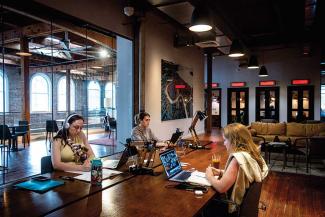Ida resulted in downed trees, damaged roofs, water intrusion in numerous campus buildings and an extended citywide loss of power. But New Orleans was spared the catastrophic flooding and widespread loss of life it experienced in 2005. Our levees received their greatest test since Katrina and passed with flying colors, allowing Tulane to rebound much more quickly than expected.
While there are still many construction workers on our campuses, their tasks have pivoted from hurricane repair to building the Tulane of the future — a university filled with the newest, state-of-the-art facilities designed to support, elevate and expand our teaching and research mission for the good of our city and world. Evidence of this is everywhere. The Village, our new undergraduate residential quad, continues to rise along McAlister Drive, making way for more students to live on campus and create more synergy, innovation and living/learning opportunities.































































